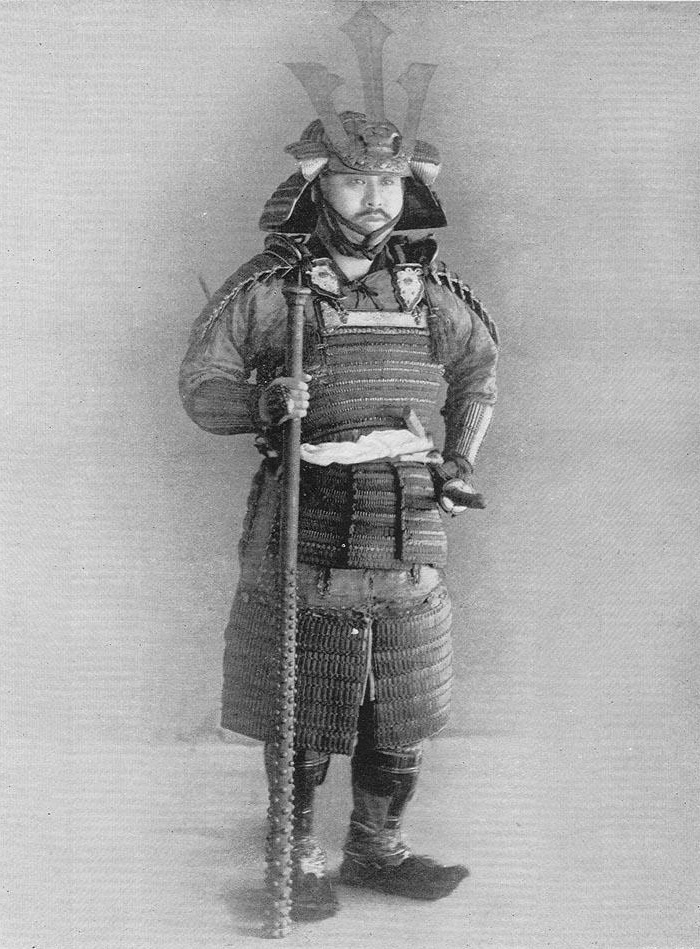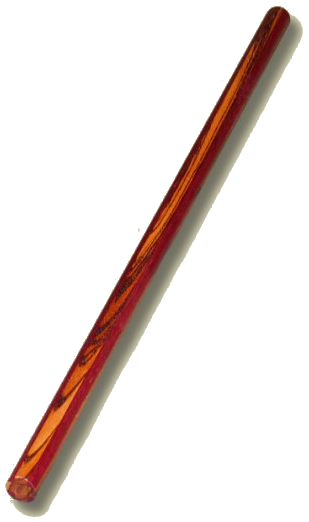|
Kanabō
The (literally "metal stick" or "metal club") is a spiked or studded two-handed war club used in feudal Japan by samurai. Other related weapons of this type are the ''nyoibo'', ''konsaibo'', , and ''ararebo''.Mol, Serge (2003). ''Classical weaponry of Japan: special weapons and tactics of the martial arts''. Kodansha International. p. 91. Related solid iron weapons with no spikes or studs are the ''kanemuchi'' (or ''kanamuchi'') and the ''aribo'' (also known as a ''gojo'' or ''kirikobo''). Description ''Kanabō'' and other related club-like weapons were constructed out of heavy wood or made entirely from iron, with iron spikes or studs on one end. For wooden ''kanabō'', one or both ends could be covered with iron caps. ''Kanabō''-type weapons came in all manner of shapes and sizes, with the largest ones being two-handed and as tall as a man, while smaller ones were primarily one-handed and the length of a forearm. Their shape could be similar to that of a baseball bat, ... [...More Info...] [...Related Items...] OR: [Wikipedia] [Google] [Baidu] |
Oni (folklore)
An is a kind of ''yōkai'', demon, orc, ogre, or troll in Japanese folklore. Oni are mostly known for their fierce and evil nature manifested in their propensity for murder and cannibalism. Notwithstanding their evil reputation, oni possess intriguingly complex aspects that cannot be brushed away simply as evil. They are typically portrayed as hulking figures with one or more horns growing out of their heads."Oni." ''Handbook of Japanese Mythology'', by Michael Ashkenazi, ABC-CLIO, 2003, pp. 230–233. Stereotypically, they are conceived of as red, blue, black, yellow, or white-colored, wearing loincloths of tiger pelt, and carrying iron kanabō clubs. They are creatures which instill fear and feelings of danger due to their grotesque outward appearance, their wild and sometimes strange behavior and their powers. They are popular characters in Japanese art, literature, and theater and appear as stock villains in the well-known fairytales of ''Momotarō'' (''Peach Boy''), ''I ... [...More Info...] [...Related Items...] OR: [Wikipedia] [Google] [Baidu] |
Samurai
were the hereditary military nobility and officer caste of medieval and early-modern Japan from the late 12th century until their abolition in 1876. They were the well-paid retainers of the '' daimyo'' (the great feudal landholders). They had high prestige and special privileges such as wearing two swords and ''Kiri-sute gomen'' (right to kill anyone of a lower class in certain situations). They cultivated the '' bushido'' codes of martial virtues, indifference to pain, and unflinching loyalty, engaging in many local battles. Though they had predecessors in earlier military and administrative officers, the samurai truly emerged during the Kamakura shogunate, ruling from 1185 to 1333. They became the ruling political class, with significant power but also significant responsibility. During the 13th century, the samurai proved themselves as adept warriors against the invading Mongols. During the peaceful Edo period (1603 to 1868), they became the stewards and chamberlains of ... [...More Info...] [...Related Items...] OR: [Wikipedia] [Google] [Baidu] |
:Category:Japanese Words And Phrases ...
{{Commons Words and phrases by language Words Words Words A word is a basic element of language that carries an objective or practical meaning, can be used on its own, and is uninterruptible. Despite the fact that language speakers often have an intuitive grasp of what a word is, there is no consen ... [...More Info...] [...Related Items...] OR: [Wikipedia] [Google] [Baidu] |
Saying
A saying is any concisely written or spoken expression that is especially memorable because of its meaning or style. Sayings are categorized as follows: * Aphorism: a general, observational truth; "a pithy expression of wisdom or truth". ** Adage, proverb, or saw: a widely known or popular aphorism that has gained credibility by long use or tradition. ** Apothegm: "an edgy, more cynical aphorism; such as, 'Men are generally more careful of the breed of their horses and dogs than of their children.'" * Axiom: a proposition that commends itself to general acceptance; a well-established or universally conceded principle; a maxim, rule, or law.''Oxford English Dictionary'' Online, accessed 2012-04-28 * Cliché or bromide: an unoriginal and overused saying. ** Platitude: a cliché that is unsuccessfully presented as though it were meaningful, original, or effective. * Epigram: a clever and often poetic written saying that comments on a specific person, idea, or thing; it especially den ... [...More Info...] [...Related Items...] OR: [Wikipedia] [Google] [Baidu] |
War Hammer
A war hammer (French: ''martel-de-fer'', "iron hammer") is a weapon that was used by both foot soldiers and cavalry. It is a very old weapon and gave its name, owing to its constant use, to Judah Maccabee, a 2nd-century BC Jewish rebel, and to Charles Martel, one of the rulers of France. In the fifteenth and sixteenth centuries the war hammer became an elaborately decorated and handsome weapon. The war hammer was a popular weapon in the late medieval period. It became somewhat of a necessity in combat when armor became so strong that swords and axes were no longer able to pierce and ricocheted upon impact. The war hammer could inflict significant damage on the enemy through their heavy impact, without the need to pierce the armor. Design A war hammer consists of a handle and a head. The length of the handle may vary, the longest being roughly equivalent to that of a halberd (5 to 6 feet or 1.5 to 1.8 meters), and the shortest about the same as that of a mace (2 to 3 feet or 60 t ... [...More Info...] [...Related Items...] OR: [Wikipedia] [Google] [Baidu] |
Mace (bludgeon)
A mace is a blunt weapon, a type of club or virge that uses a heavy head on the end of a handle to deliver powerful strikes. A mace typically consists of a strong, heavy, wooden or metal shaft, often reinforced with metal, featuring a head made of stone, bone, copper, bronze, iron, or steel. The head of a military mace can be shaped with flanges or knobs to allow greater penetration of plate armour. The length of maces can vary considerably. The maces of foot soldiers were usually quite short (two or three feet, or sixty to ninety centimetres). The maces of cavalrymen were longer and thus better suited for blows delivered from horseback. Two-handed maces could be even larger. Maces are rarely used today for actual combat, but many government bodies (for instance, the British House of Commons and the U.S. Congress), universities and other institutions have ceremonial maces and continue to display them as symbols of authority. They are often paraded in academic, parliamentary or ... [...More Info...] [...Related Items...] OR: [Wikipedia] [Google] [Baidu] |
List Of Martial Arts Weapons
Weapons used in the world's martial arts can be classified either by type of weapon or by the martial arts school using them. By weapon type Melee weapons *List of melee weapons **Bladed weapons ***Swords: see Types of swords ***Knife, Knives ***Daggers: see List of daggers ***Axe ***Sickle ***Kama (weapon), Kama ***War hammer **Polearms ***Halberd ***Spear ***Guandao ***War scythe **Blunt weapons ***Club (weapon), Clubs/Mace (bludgeon), Mace/Baton (law enforcement), Baton ***Stick fighting, Stick/Staff (other)#Stick, Staff / Sjambok ***Tonfa / Baton (law enforcement), (side handled) baton ***Knuckleduster Ranged weapons *List of ranged weapons **Bow (weapon), Bows **Crossbows **Firearms **Ninja Star **Blowguns **Chakrams **Shurikens **Sling (weapon), Slings **Taser **Ballistic knife Flexible weapons *Chain weapons *Whips *Ropes *Tabak-Toyok *Slapjack (weapon), Slapjack *Nunchaku Defensive weapons *Defensive weapon, List of defensive weapons **Pepper spray **Armours *** ... [...More Info...] [...Related Items...] OR: [Wikipedia] [Google] [Baidu] |
Tanbō
The is a short staff weapon used in Okinawa and feudal Japan. Today the is used by various martial arts schools. Description The is a short hardwood staff that is used in the same way as the approximately 1-meter-long hanbō. Short staffs smaller than 1 meter can be called . There is no official length for a as different ''ryū'' (martial arts schools) use of various lengths. can be individually sized using variations of the "hand to elbow" method. Usage The is used in several martial arts including: jujutsu, aikido, kobudo, hapkido, yoseikan budo, Cuong Nhu. are swung using the elbow and shoulder, or manipulated with the wrist. Many of the motions are similar to sword strokes. The can be deadly in skilled hands. The main use is to attack the outer edges of the human bones with speed and accuracy. Applying this concept, virtually every part of the target can be hit with this weapon. To use this weapon effectively, the opponent may be imagined as a 2-dimensional ... [...More Info...] [...Related Items...] OR: [Wikipedia] [Google] [Baidu] |
Hanbō
The ''hanbō'' (半棒, "half-staff") is a staff used in martial arts. Traditionally, the ''hanbō'' was approximately three ''shaku'' or about long, half the length of the usual staff, the '' rokushakubō'' ("six ''shaku'' staff"). Diameter was . However, depending on the school the length and diameter varied. As with any weapon, bearers would often find one best suited to their build, opting often for one that comes up to about waist/hip height. Usage Hanbōjutsu, the art of wielding the ''hanbō'', is a focus in several martial arts including the ''Kukishin-ryū'' '' koryū'' classical school of martial arts, and '' Kukishinden-ryū'', one of the nine schools of '' Bujinkan Budo Taijutsu''. Part of the importance in using this length is that it is approximately that of a walking cane. Although techniques with a cane in this ''ryū-ha'' utilize pulling or hooking and possess one rounded end, they invariably function the same as a ''hanbō'' in all other respects. The hanbō ... [...More Info...] [...Related Items...] OR: [Wikipedia] [Google] [Baidu] |
Statue
A statue is a free-standing sculpture in which the realistic, full-length figures of persons or animals are carved or cast in a durable material such as wood, metal or stone. Typical statues are life-sized or close to life-size; a sculpture that represents persons or animals in full figure but that is small enough to lift and carry is a statuette or figurine, whilst one more than twice life-size is a colossal statue. Statues have been produced in many cultures from prehistory to the present; the oldest-known statue dating to about 30,000 years ago. Statues represent many different people and animals, real and mythical. Many statues are placed in public places as public art. The world's tallest statue, ''Statue of Unity'', is tall and is located near the Narmada dam in Gujarat, India. Color Ancient statues often show the bare surface of the material of which they are made. For example, many people associate Greek classical art with white marble sculpture, but there is evidenc ... [...More Info...] [...Related Items...] OR: [Wikipedia] [Google] [Baidu] |
Mythical Weapon
Mythological objects encompass a variety of items (e.g. weapons, armor, clothing) found in mythology, legend, folklore, tall tale, fable, religion, spirituality, superstition, paranormal, and pseudoscience from across the world. This list will be organized according to the category of object. Armor Armor * Armor of Achilles, created by Hephaestus and said to be impenetrable. (Greek mythology) * Armor of Beowulf, a mail shirt made by Wayland the Smith. (Anglo-Saxon mythology) * Armor of Örvar-Oddr, an impenetrable "silken mailcoat". ( Norse mythology) * Babr-e Bayan, a suit of armor that Rostam wore in wars described in the Persian epic ''Shahnameh''. The armor was invulnerable against fire, water and weapons. (Persian mythology) * Golden Coat of Chainmail, part of Fafnir's treasure which Sigurd took after he slew the dragon. ( Norse mythology) * Green Armor, protects the wearer from physical injuries. (Arthurian legend) * Kavacha, the armor of Karna that was granted ... [...More Info...] [...Related Items...] OR: [Wikipedia] [Google] [Baidu] |






